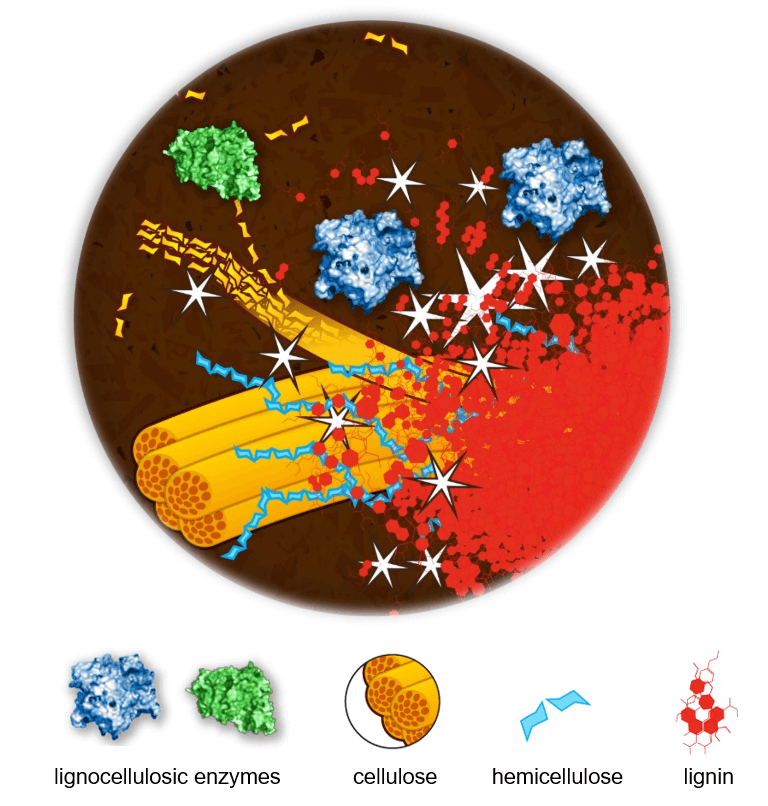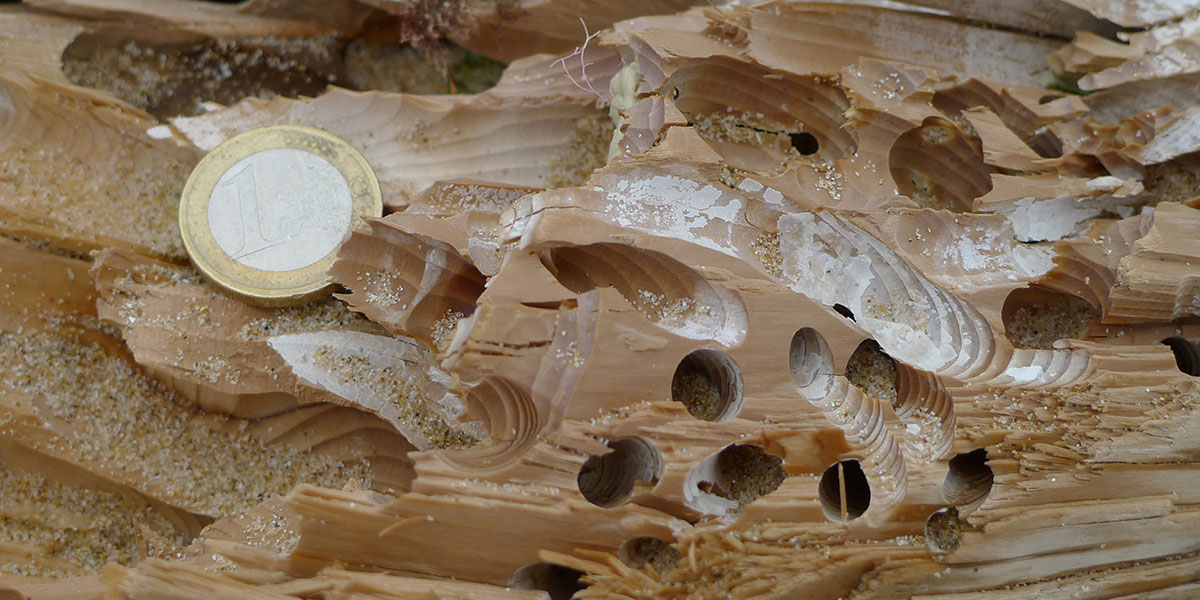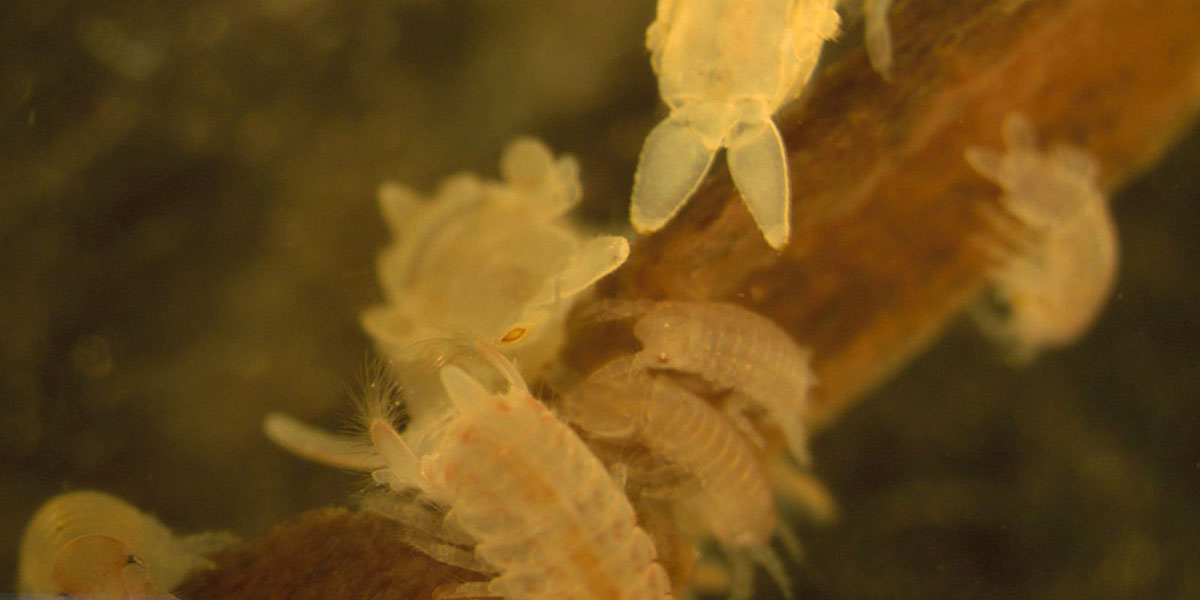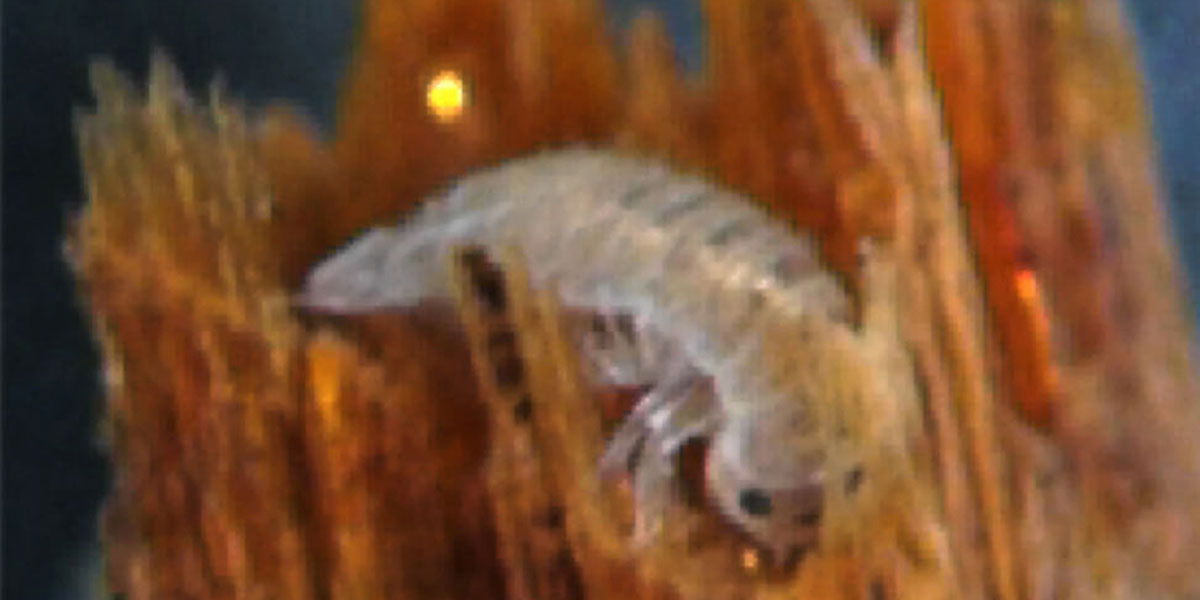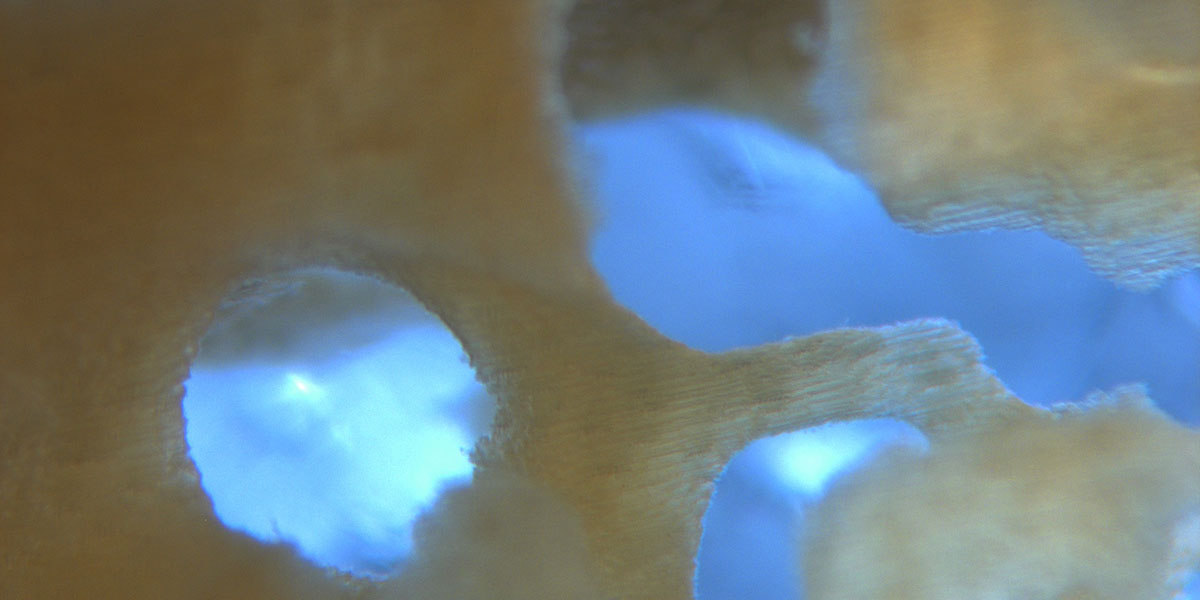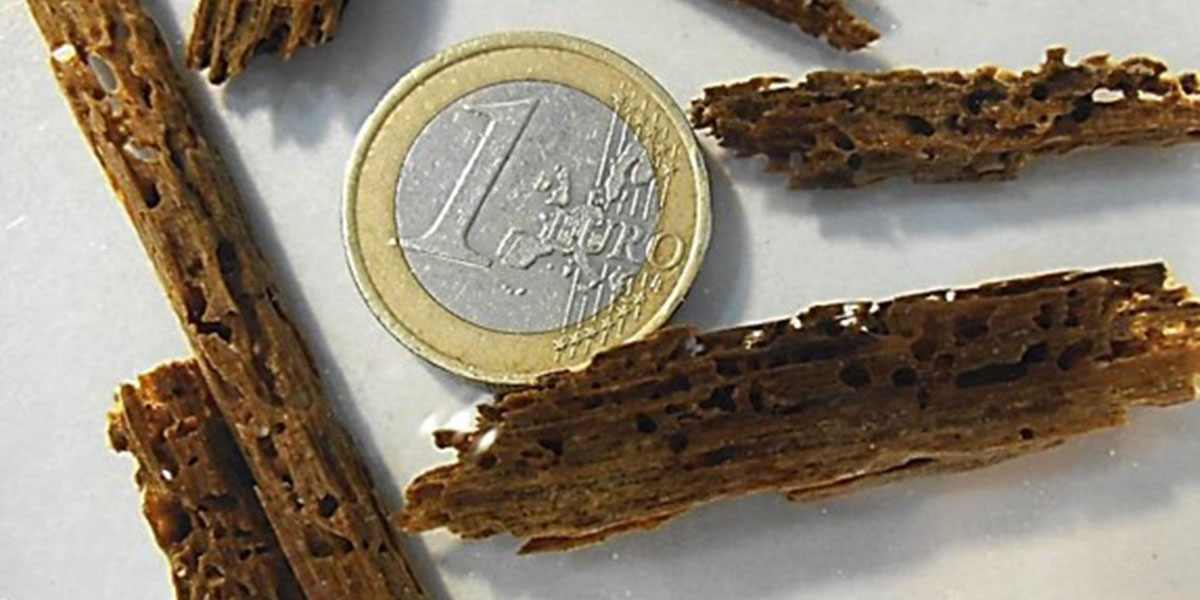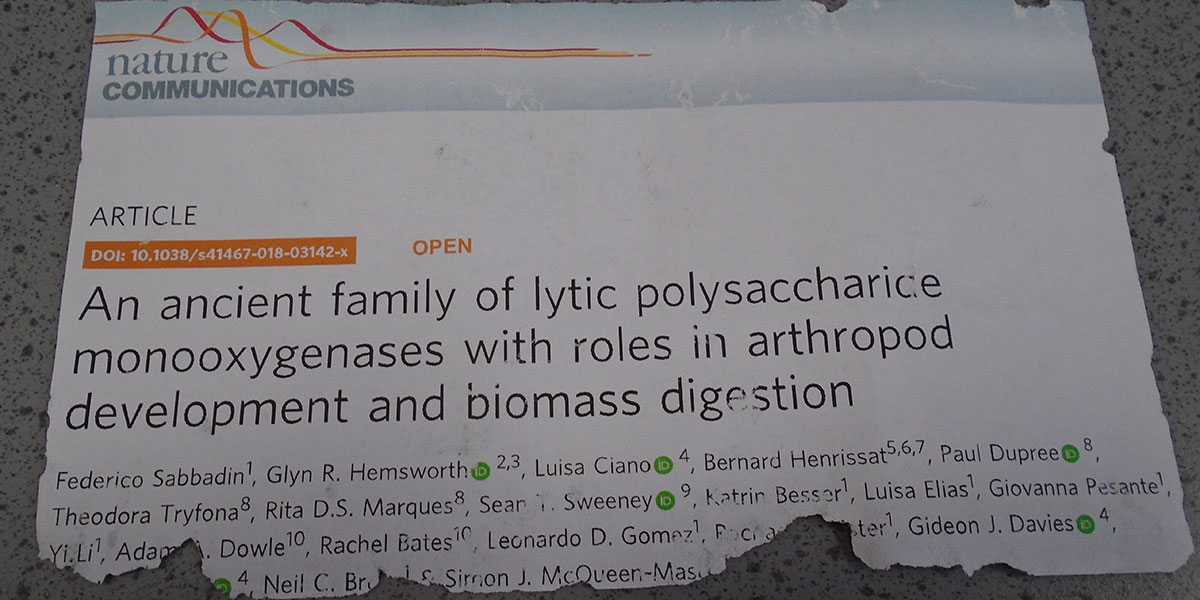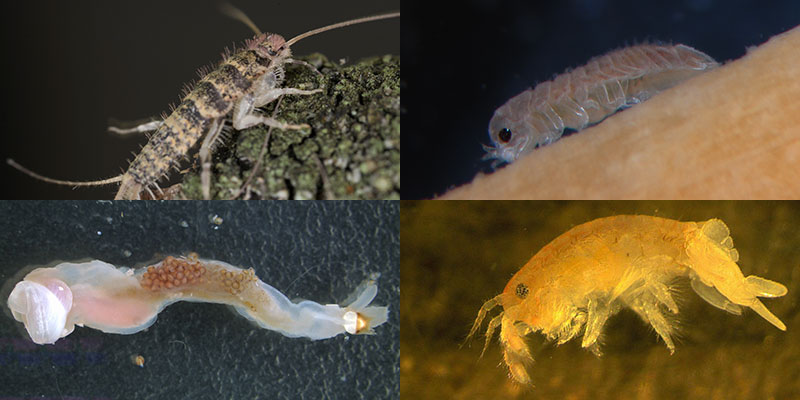
Invertebrate wood digestive systems
This project builds on our previous work on the digestive systems of wood-boring and litter-feeding invertebrates and the discovery of lignocellulose-active enzymes (1-5). It expands to incorporate expertise in structural analysis and the degradation mechanism of lignocellulosic substrates by collaboration with Christopher Lancefield at the University of St Andrews.
Context
Lignocellulose (woody plant parts) is composed of roughly equal parts of cellulose (a linear polymer of glucose), hemicellulose (a complex polymer of various sugars) and lignin (a polyphenol). Between them, these polymers can provide us with sugars for fermentation to produce a range of products, and aromatic chemicals to replace those from the petrochemical sector.
However, lignocellulose is a tough and durable material that is insoluble and hard to depolymerise selectively. At present, the costs of enzyme cocktails (and the associated pre-treatments) required for this decomposition represent the biggest cost barrier to producing economically competitive lignocellulosic biorefineries.
Any improvement of lignocellulose deconstruction can have a big impact on the overall process efficiency and economics of sustainable bio-based industries.
The research
Remarkably, a range of invertebrate animals from different phyla and subphyla have independently evolved the capability to thrive on a diet comprised of lignocellulose, and accomplish this with differing digestive strategies (1-6).
Enzymes in the guts of invertebrates prepare the lignocellulosic food for digestion by opening the complex composite material (stars) and enabling access to the polymers by enzymes for degradation.
We propose to ultimately combine common features and unique specialisations from different invertebrate wood-digesting and litter-feeding species in order to develop effective in-vitro digestive strategies for lignocellulose deconstruction in an industrial context.
We are looking at three invertebrate marine wood-borers:
- Limnoria ssp. (isopod crustacean, ‘gribble’)
- Chelura terebrans (amphipod crustacean, ‘gribble’)
- Lyrodus pedicellatus (bivalve mollusc, ‘shipworm’)
and at one terrestrial litter-feeder:
- Thermobia domestica (insect, ‘firebrat’, ‘bookworm’)
Gribbles have sterile digestive systems, which means that their guts are free of any residential microbes. Shipworms have a different digestive strategy and supplement endogenous digestive enzymes with ones from endosymbiotic bacteria in their gills. Firebrats are known to efficiently digest crystalline cellulose and like gribbles do so without microbial assistance.
Project activities and publications
- Molecular insight into lignocellulose digestion by a marine isopod in the absence of gut microbes published in PNAS
- Structural characterization of a unique marine animal family 7 cellobiohydrolase suggests a mechanism of cellulase salt tolerance published in PNAS
- Hemocyanin facilitates lignocellulose digestion by wood-boring marine crustaceans published in Nature Communications
- Uncovering the molecular mechanisms of lignocellulose digestion in shipworms published in Biotechnology for Biofuels
- An ancient family of lytic polysaccharide monooxygenases with roles in arthropod development and biomass digestion published in Nature Communications
- Lignocellulose degradation mechanisms across the tree of life published in ScienceDirect
Gallery
Contact us
Centre for Novel Agricultural Products
cnap@york.ac.uk
+44 (0)1904 328776
Department of Biology,
University of York,
Wentworth Way,
York
YO10 5DD
Related links
Featured researcher

Juliana Sanchez Alponti
Dr Sanchez Alponti's research focuses on the characterisation of enzymes from the marine environment for efficient lignocellulose degradation.
Featured researcher

Katrin Besser
Dr Besser's research focuses on enzyme discovery and characterisation for the realisation of efficient liquid biofuel production from plant biomass.
Featured researcher

Neil Bruce
Professor Bruce's expertise is environmental biotechnology, biocatalysis, and biorefining.
Featured researcher

Simon McQueen-Mason
Professor McQueen-Mason's research encompasses various aspects of lignocellulosic biorefining and biofuels.
 |
Leverhulme Research Fellow, St Andrews University |
|---|
Contact us
Centre for Novel Agricultural Products
cnap@york.ac.uk
+44 (0)1904 328776
Department of Biology,
University of York,
Wentworth Way,
York
YO10 5DD
